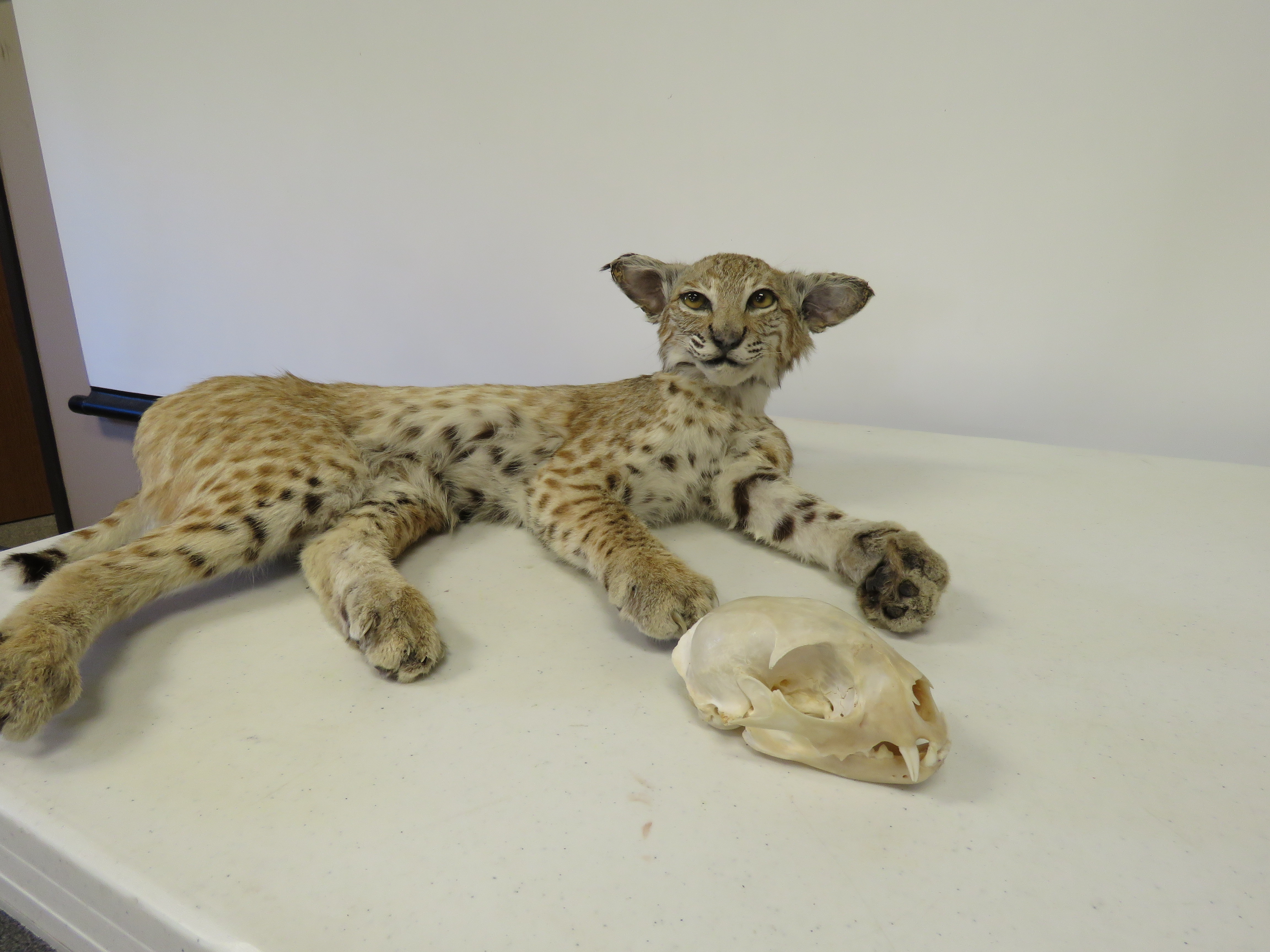Press Release from the Crawford Park District:
The Crawford Park District hosted a Bobcat Program on Thursday at the Lowe-Volk Nature Center.
The guest presenter for the event, Meredith Gilbert, Communications Specialist for the Ohio Division of Wildlife, discussed many facets of bobcats in Ohio. As bobcat numbers have increased, so too have sightings of this elusive feline. Gilbert said many people throughout the state send in photos of purported bobcat sightings to the division’s personnel. Without a very clear and verifiable picture, Gilbert talked about the characteristics of identifying a bobcat in a not-so-clear photo. In one photo, a “cat” was shown with its paw up.
“In this photo, we can tell this is a domestic cat and not a bobcat due to its paw size. Our native wildcats have a paw that is wider than their front leg, whereas domestic cats have a paw that is the same width of its leg,” Gilbert explained.
She also discussed how other characters, including the bob-tail and ear tufts, are great identifiers. Bobcats in Ohio typically breed from January to July and can have two to seven kittens. Their den sites are highly variable, from rock crevices to hollow logs. Habitat preferences can vary slightly, but one component is very important: a thick understory.
“While we think of bobcats living in old growth forests, they don’t provide good cover for bobcats on the forest floor, which is typically pretty open. We find their highest populations in Ohio to be recently reclaimed mine areas,” Gilbert said.
These areas are just starting their forest succession, providing good ground cover for them to hide and find prey. It is assumed the thicker habitats also provide more of a bobcat’s preferred food: small mammals (e.g. mice, voles, chipmunks).
“They will also prey upon other animals such as birds, reptiles, amphibians, and insects. As a true carnivore, they don’t eat plant material like coyotes and foxes do. This lends itself to telling apart the scat of these animals. Bobcats will have fur and bones only, whereas our canine’s cat will also include berry seeds and other plant material,” Gilbert said.
Also of note during the program is the research the division does to learn more about Ohio’s Bobcats.
“If we, as an agency, are to manage bobcats properly, we need to know about them in order to manage them,” Gilbert said.
Some studies involved radio collars and hair snares. Hair snares are basically rubbing posts, using a felines’ tendency to rub its face and body upon an object, much like our domestic cats do.
Gilbert explained how the hair snares work.
“A piece of carpet is attached to a post with blunted nails sticking through to collect a hair sample for DNA analysis. Beaver castor and catnip are applied to the carpet square to attract the Bobcat to the snare. We also mounted two trail cameras to make sure we captured other evidence of Bobcats using the hair snare site,” Gilbert said.
Bobcats were extirpated from Ohio in the mid-1800’s as persecution and habitat loss increased. As land use changed, particularly in the Appalachian hills region of Ohio, bobcat sightings started to be reported in Scioto County in 1946. Monitoring for Bobcats began in 1990 an ever-increasing number of sightings were being reported.
Today, bobcats sightings occur throughout the states and it is presumed they are present in every Ohio county. In 2014, bobcats were removed from Ohio’s Endangered Species List. They are still protected by law and cannot be hunted, trapped, or otherwise harassed.
“Bobcats are a great comeback story for wildlife management in Ohio,” said Gilbert.
If you capture a photo of a bobcat, call the Ohio Division of Wildlife at 1-800-WILDLIFE; or, send the picture to jdyer@crawfordparkdistrict.org.


